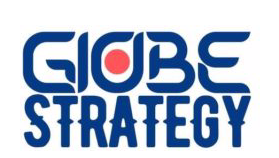A strategic alliance is a relationship between two or more parties to pursue a set of agreed-upon goals or to meet a critical business need while remaining independent organizations. This form of cooperation lies between mergers and acquisitions (M&A) and organic growth.
Reasons for Strategic Alliance
The alliance is a cooperation or collaboration that aims for a synergy where each partner hopes that the benefits from the alliance will be greater than those from individual efforts. Partners may provide the strategic alliance with resources such as products, distribution channels, manufacturing capability, project funding, capital equipment, knowledge, expertise, or intellectual property.
The alliance often involves technology transfer (access to knowledge and expertise), economic specialization (David C. Mowery, Joanne E. Oxley, Brian S. Silverman. Strategic Alliances and Interfirm Knowledge Transfer. Winter 1996. Strategic Management Journal, Vol. 17, Special Issue: Knowledge and the Firm, pp. 77-91), shared expenses, and shared risk.

Cooperative sourcing is a collaboration or negotiation between different companies with similar business processes. To save costs, the competitor with the best production capability can insource the business process of the other competitors. This practice is especially common in IT-oriented industries as a result of low to no variable costs, e.g. banking. Since all of the negotiating parties can be outsourcers or insourcers, the main challenge in this collaboration is to find a stable coalition and the company with the best production function. High switching costs, costs for searching potential cooperative sourcers, and negotiating may result in inefficient solutions.
Forming a Strategic Alliance
Upper management is tasked with the developing complex interactive strategies when entering a strategic alliance. Aligning stakeholders from different businesses and ensuring the costs do not outweigh the benefits requires careful managerial consideration. The following steps highlight key aspects of the strategic alliance process:
- Strategy development involves studying the alliance’s feasibility, objectives, and rationale; it also entails focusing on the major issues and challenges and development of resource strategies for production, technology, and people. It requires aligning alliance objectives with the overall corporate strategy.
- Partner assessment involves analyzing a potential partner’s strengths and weaknesses; creating strategies to accommodate all partners’ management styles; preparing appropriate partner selection criteria; understanding a partner’s motives for joining the alliance; and addressing resource capability gaps that may exist for a partner.
- Contract negotiation involves determining whether all parties have realistic objectives; forming high-caliber negotiating teams; defining each partner’s contributions and rewards as well as protecting any proprietary information; addressing termination clauses and penalties for poor performance; and highlighting the degree to which arbitration procedures are clearly stated and understood.
- Alliance operations comprise addressing senior management‘s commitment; finding the caliber of resources devoted to the alliance; linking budgets and resources to strategic priorities; measuring and rewarding alliance performance; and assessing the performance and results of the alliance.
- Alliance termination entails winding down the alliance—for instance, when its objectives have been met or cannot be met or when a partner adjusts priorities or reallocates resources elsewhere.
Potential Benefits of Strategic Alliances
Benefits of strategic alliances vary according to each business’s strengths and objectives and may include:
- Pooling expensive resources and share development or R & D costs on new products
- Locking in supply chains
- Building credibility with customers (“Our strategic partners include…”)
- Allowing each partner to concentrate on activities that best match its capabilities
- Learning from partners and developing competencies that may be more widely exploited elsewhere
- Creating adequate suitability of resources and competencies for an organization to survive
Source: Boundless. “Global Strategy.” Boundless Management. Boundless, 17 Nov. 2014. Retrieved 07 Feb. 2015 from https://www.boundless.com/management/textbooks/boundless-management-textbook/strategic-management-12/common-types-of-corporate-strategies-90/global-strategy-436-1455/
Source: Boundless. “Cooperative Strategy.” Boundless Management. Boundless, 17 Nov. 2014. Retrieved 07 Feb. 2015 from https://www.boundless.com/management/textbooks/boundless-management-textbook/strategic-management-12/common-types-of-corporate-strategies-90/cooperative-strategy-437-1456/
